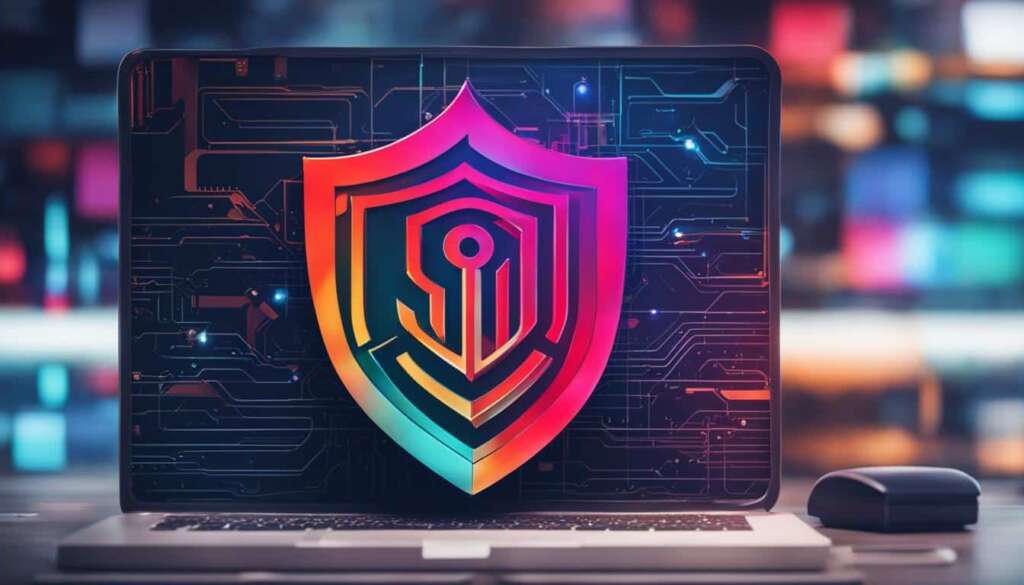Table of Contents
Implementing strong cybersecurity frameworks is essential in today’s connected world. It is important for businesses to understand their critical assets and the regulations they need to comply with. By leveraging technology and implementing data loss prevention solutions, organizations can protect their sensitive data and ensure compliance with data protection regulations.
Understanding the Importance of Identifying Critical Data
In today’s digital landscape, organizations face a multitude of cyber threats that can compromise the security of their critical data. It is crucial for businesses to understand the importance of identifying and protecting this sensitive information. By implementing robust cybersecurity frameworks and complying with data protection regulations such as the General Data Protection Regulation (GDPR), organizations can safeguard their critical data and maintain the trust of their customers.
To effectively identify critical data, companies must first conduct a comprehensive audit of their information assets. This includes both on-premise and cloud-based data, ensuring that no valuable information is overlooked. It is important to consider data that is subject to legal regulations, such as personally identifiable information (PII) and financial data.
Implementing data loss prevention solutions can greatly assist in the identification and protection of critical data. These solutions use advanced technologies to automatically scan and classify data, flagging any sensitive information that may be at risk. By continuously monitoring data flows and implementing encryption and access controls, organizations can ensure that their critical data is protected from unauthorized access and potential breaches.
| Benefits of Identifying Critical Data | Steps to Identify Critical Data |
|---|---|
|
|
By understanding the importance of identifying critical data and implementing the necessary measures to protect it, organizations can significantly reduce the risk of data breaches and ensure compliance with data protection regulations. Taking proactive steps to safeguard critical data is essential in today’s increasingly interconnected and data-driven world.
Addressing Vulnerabilities and Closing Gaps
Once critical data has been identified, it is crucial for organizations to address vulnerabilities and close security gaps. By implementing robust security measures, businesses can enhance their overall cybersecurity posture and protect against potential threats.
Network and Endpoint Detection and Response
One important aspect of addressing vulnerabilities is the implementation of network and endpoint detection and response solutions. These tools help monitor and detect suspicious activity, enabling organizations to quickly identify and respond to potential cyber threats. By continuously monitoring network traffic and endpoint behavior, businesses can proactively identify and mitigate vulnerabilities before they can be exploited by malicious actors.
Cloud Access Service Brokers
In today’s digital landscape, many organizations rely on cloud services for their operations. However, the use of cloud services also introduces its own set of vulnerabilities. To address these risks, companies should consider the services of cloud access service brokers (CASB). CASBs provide an additional layer of security by enforcing security policies and monitoring sensitive data transfers between employees and the cloud. This helps ensure that data stored in the cloud remains secure and protected.
In conclusion, addressing vulnerabilities and closing security gaps is essential for organizations to safeguard their critical assets. Through the implementation of network and endpoint detection and response solutions, as well as leveraging the services of cloud access service brokers, businesses can strengthen their cybersecurity defenses and protect against potential threats.

Establishing a Backup and Recovery Plan
As part of a comprehensive cybersecurity strategy, it is crucial for organizations to establish a robust backup and recovery plan. This plan ensures the continuity of operations and minimizes the impact of cyber attacks. A backup and recovery plan involves creating regular backups of critical data and implementing strategies for quick and efficient recovery in the event of a breach or system failure.
One of the key components of a backup and recovery plan is data dispersal. By distributing data across multiple geographic servers, organizations reduce the risk of data loss due to localized incidents. Additionally, offline backups should be regularly updated, ensuring that the most recent copies of data are readily available if needed.
To ensure business continuity, it is essential to test the backup and recovery plan. By simulating real-world scenarios, organizations can identify any potential weaknesses and ensure that the remaining systems can handle the load of compromised machines. Regular testing and updating of the plan are crucial to adapt to evolving cyber threats and maintain an effective backup and recovery strategy.
| Benefits of a Backup and Recovery Plan | Considerations for Implementation |
|---|---|
|
|
Having a well-defined backup and recovery plan is essential for business continuity in the face of cyber threats. By dispersing data across multiple locations and regularly updating offline backups, organizations can minimize the impact of cyber attacks and ensure the resilience of their operations.
Remember, a backup and recovery plan is not a one-time solution. It requires continuous monitoring and improvement to adapt to changing cybersecurity landscapes. By regularly assessing the effectiveness of the plan and making necessary adjustments, organizations can stay one step ahead of cybercriminals and safeguard their critical assets.
Executing the Cybersecurity Plan
Once a cybersecurity plan is developed, it is crucial to execute it effectively to protect the organization’s data and systems. This requires a strategic approach and the right resources to ensure seamless integration and implementation. Let’s explore the key steps involved in executing a cybersecurity plan.
1. Talent Acquisition and Expertise
Executing a cybersecurity plan requires skilled professionals who possess the expertise to deploy and sustain the technology solutions. Hiring cybersecurity specialists can help organizations build a strong team capable of handling various security challenges. These specialists can provide valuable insights, develop and implement security measures, and continuously monitor and analyze the organization’s security posture. Alternatively, partnering with a Managed Security Service Provider (MSSP) can offer a cost-effective solution by outsourcing cybersecurity operations to experts.
2. Training and Awareness
Education and training play a critical role in executing a cybersecurity plan successfully. All employees should receive comprehensive training on the organization’s cybersecurity policies, best practices, and protocols. This will help create a culture of cyber awareness and responsible behavior. Regular training sessions and awareness campaigns can keep employees updated on emerging threats and the importance of adhering to security protocols.
3. Incident Response and Contingency Planning
Executing a cybersecurity plan involves preparing for incidents and having a robust incident response strategy in place. Organizations should establish clear protocols for detecting, investigating, containing, and responding to cybersecurity incidents. This includes appointing incident response teams, defining roles and responsibilities, and conducting regular simulations to test the effectiveness of the plan. Additionally, developing a contingency plan ensures business continuity in the event of an incident, by outlining steps to recover and restore systems and data.
By executing the cybersecurity plan diligently and leveraging the expertise of cybersecurity specialists or MSSPs, organizations can strengthen their security posture and safeguard their critical assets from evolving cyber threats.

Continuously Assessing and Improving Cybersecurity Posture
Once a cybersecurity framework is in place, it is important for organizations to continuously assess and improve their cybersecurity posture. The threat landscape is constantly evolving, and cybercriminals are always finding new ways to breach defenses. Therefore, regular assessments are vital to identify any vulnerabilities and gaps in the security infrastructure.
Assessing cybersecurity posture involves conducting thorough audits and vulnerability scans to identify potential weaknesses in the system. These assessments can help organizations understand their current security standing and prioritize areas that require immediate attention. By keeping track of emerging threats and industry best practices, businesses can stay one step ahead of cybercriminals and ensure their security measures remain effective.
Scaling security defenses is another crucial aspect of maintaining a robust cybersecurity posture. As organizations grow and evolve, their security needs may change. It is essential to evaluate the scalability of existing security solutions and adjust them accordingly to accommodate the increasing volume of data and users. This can involve upgrading hardware and software systems, implementing advanced encryption protocols, and adopting more resilient cloud security measures.
Continuous Improvement and Adaptability
Continuous improvement is key to staying resilient in the face of evolving cyber threats. Apart from assessing and scaling security defenses, organizations should prioritize employee training and awareness programs. Educating employees about cybersecurity best practices and potential threats can significantly reduce the risk of human error and improve overall security posture.
Furthermore, organizations should establish incident response plans and conduct regular drills to ensure preparedness for cyber-attacks. These plans outline the necessary steps to be taken in the event of a security incident, enabling organizations to respond effectively and minimize potential damage.
By continuously assessing cybersecurity posture and adapting security measures, organizations can maintain a strong defense against cyber threats. Regular audits, scalable defenses, and a culture of continuous improvement are crucial components of a robust cybersecurity strategy.
| Benefits of Continuous Assessment and Improvement | Challenges of Continuous Assessment and Improvement |
|---|---|
| 1. Identifies vulnerabilities and gaps in the security infrastructure. | 1. Requires dedicated resources and expertise to conduct regular assessments. |
| 2. Helps organizations stay updated with emerging threats and industry best practices. | 2. Requires ongoing investment in upgrading hardware and software systems. |
| 3. Improves the overall security posture and reduces the risk of cyber-attacks. | 3. Involves continuous training and awareness programs for employees. |
Continuous assessment and improvement are ongoing processes that demand a proactive approach to cybersecurity. With the ever-increasing sophistication of cyber threats, organizations must prioritize the regular evaluation and optimization of their security measures to stay ahead. By staying vigilant and adaptable, businesses can better protect their critical assets and maintain a strong defense against cybercriminals.

Understanding the Impact of Cyber Threats and the Importance of Incident Response
Cyber threats pose a significant risk to organizations, with data breaches and cyber-attacks resulting in substantial financial losses. Understanding the importance of incident response is crucial in mitigating these risks and minimizing the potential damage caused by such events. Implementing a robust incident response plan helps organizations detect, investigate, contain, respond to, and recover from cybersecurity incidents effectively.
“Cyber-attacks are becoming increasingly sophisticated, and no organization is immune to their potential impact. It’s not a matter of if, but when an incident will occur,” says cybersecurity specialist Sarah Thompson. “Having a well-defined incident response plan in place enables organizations to respond swiftly and efficiently, reducing the overall impact on their operations and reputation.”
Incident response involves a coordinated effort to manage and mitigate the effects of a cyber incident. It includes various stages, such as identification, containment, eradication, and recovery. The goal is to minimize the damage caused, restore normal operations, and prevent similar incidents from recurring.
By having a thorough understanding of cyber threats and investing in incident response capabilities, organizations can effectively protect their data, systems, and reputation. Regularly testing and updating the incident response plan, training employees on best practices, and fostering a culture of cyber awareness are essential for an organization’s overall security posture.

“The ability to respond swiftly to cyber incidents is crucial in today’s increasingly interconnected world,” emphasizes cybersecurity expert Mark Wilson. “Organizations need to be prepared to handle various types of threats, including malware attacks, phishing attempts, and unauthorized access. This requires a proactive and well-coordinated incident response strategy.”
Incident Response Plan Components
An effective incident response plan typically includes the following components:
- Preparation: Establishing clear roles and responsibilities, defining communication protocols, and conducting regular training and drills.
- Identification: Recognizing and confirming the occurrence of a security incident through monitoring, detection systems, or user reports.
- Containment: Isolating the affected systems, minimizing further damage, and preventing the incident from spreading.
- Eradication: Removing the cause of the incident, eliminating any malicious presence, and restoring affected systems to a secure state.
- Recovery: Restoring normal operations, validating system integrity, and implementing additional security measures to prevent future incidents.
A comprehensive incident response plan helps organizations to effectively handle cyber threats, minimize the impact of incidents, and ensure business continuity. By prioritizing incident response, organizations can proactively protect their valuable assets and maintain customer trust in an increasingly digital landscape.
Key Steps in Implementing a Cybersecurity Incident Response Framework
Implementing a cybersecurity incident response framework involves several key steps that organizations must follow to effectively respond to and mitigate the impact of cybersecurity incidents. By following a structured approach, businesses can minimize damage, restore operations quickly, and ensure the security and integrity of their systems and data. The key steps in implementing a cybersecurity incident response framework are:
1. Preparation
Preparation is the foundation of any effective incident response plan. This step involves defining roles and responsibilities within the incident response team, establishing communication channels, and documenting the necessary procedures and processes. It is crucial to identify potential threats and vulnerabilities, assess their potential impact, and develop appropriate response strategies.
2. Identification
The next step in the incident response framework is the identification of cybersecurity incidents. This involves monitoring systems, networks, and logs to detect any suspicious activity or potential security breaches. Organizations must establish robust monitoring capabilities to promptly detect and identify security incidents.
3. Containment
Once an incident is identified, the immediate priority is to contain the impact and limit further damage. This involves isolating affected systems or networks, disconnecting compromised devices from the network, and implementing security controls to prevent the incident from spreading. Effective containment measures can help prevent the escalation of an incident and mitigate its impact.
4. Eradication
After containing the incident, the next step is to eradicate the root cause and eliminate any vulnerabilities that may have been exploited. This may involve removing malware, patching or updating systems, and improving security configurations. It is crucial to conduct a thorough investigation to identify the source of the incident and take appropriate remedial actions.
5. Recovery
The final step in the incident response framework is the recovery phase. This involves restoring affected systems and networks, validating their integrity, and resuming normal operations. Organizations must prioritize the recovery of critical systems and data to minimize downtime and ensure business continuity. It is important to verify the effectiveness of recovery measures and conduct post-incident reviews to identify lessons learned and areas for improvement.
| Step | Description |
|---|---|
| Preparation | Define roles and responsibilities, establish communication channels, and document procedures and processes. |
| Identification | Monitor systems and networks to detect and identify cybersecurity incidents. |
| Containment | Isolate affected systems or networks and implement security controls to limit the impact. |
| Eradication | Remove the root cause, eliminate vulnerabilities, and conduct a thorough investigation. |
| Recovery | Restore systems and networks, validate integrity, and resume normal operations. |
Best Practices for Implementing a Cybersecurity Incident Response Framework
Implementing a robust incident response plan is crucial for organizations to effectively address and mitigate cybersecurity incidents. By following best practices, businesses can enhance their incident response capabilities and minimize the impact of cyber threats. The following are key recommendations for implementing a cybersecurity incident response framework:
- Develop an Incident Response Plan: Create a comprehensive incident response plan that outlines the procedures, roles, and responsibilities of the incident response team. The plan should provide clear instructions for identifying, containing, eradicating, and recovering from cybersecurity incidents.
- Threat Prioritization: Prioritize threats based on their potential impact on critical assets and systems. Assign severity levels to different types of incidents to ensure appropriate resources are allocated for response and remediation.
- Collaboration: Foster collaboration with internal teams, external stakeholders, and industry peers. Establish communication channels and incident reporting mechanisms to facilitate timely sharing of information and coordination during incident response.
- Regular Updates: Continuously update and refine the incident response plan to align with evolving cyber threats and organizational changes. Regularly review and test the plan to identify gaps and areas for improvement.
By implementing these best practices, organizations can strengthen their incident response capabilities and effectively mitigate the impact of cybersecurity incidents. It is important to remember that cybersecurity is an ongoing process and requires continuous evaluation and improvement to adapt to emerging threats and protect critical assets.
“Effective incident response requires a proactive approach and collaboration among all stakeholders. By prioritizing threats, fostering collaboration, and regularly updating the incident response plan, organizations can effectively respond to cybersecurity incidents and minimize the potential damage.”
Table: Incident Response Plan Components
| Component | Description |
|---|---|
| 1. Incident Response Team | Identify and assign roles and responsibilities to members of the incident response team. Define communication channels and escalation procedures. |
| 2. Incident Identification | Establish methods for detecting and identifying cybersecurity incidents. Implement monitoring tools, threat intelligence feeds, and anomaly detection mechanisms. |
| 3. Incident Containment | Develop procedures for containing and isolating the incident to prevent further damage. This may involve disabling compromised accounts, blocking malicious network traffic, or implementing temporary security measures. |
| 4. Incident Eradication | Define steps for eradicating the root cause of the incident. This may involve patching vulnerabilities, removing malicious software, or restoring compromised systems from clean backups. |
| 5. Incident Recovery | Establish procedures for recovering affected systems and data. Restore services, validate the integrity of restored data, and implement measures to prevent similar incidents in the future. |
| 6. Post-Incident Analysis | Conduct a thorough analysis of the incident to identify lessons learned and areas for improvement. Document findings and update the incident response plan accordingly. |
Implementing a well-defined incident response plan with clearly defined components and incorporating best practices ensures that organizations are well-prepared to detect, respond to, and recover from cybersecurity incidents.
Continuous Improvement and Lessons Learned
Continuous improvement is vital in the ever-evolving field of cybersecurity. Organizations must regularly analyze cybersecurity incidents, identify areas for improvement, and update their incident response plans accordingly. Incident analysis allows companies to gain valuable insights into the tactics, techniques, and procedures employed by cybercriminals, enabling them to strengthen their defenses and prevent future attacks.
Training is a crucial component of continuous improvement in cybersecurity. By educating employees about the latest threats and best practices, organizations can create a culture of cyber awareness. Training should cover topics such as identifying phishing emails, implementing strong passwords, and recognizing social engineering techniques. Ongoing training ensures that employees remain vigilant and proactive in safeguarding company data.
Lessons learned from past incidents play a critical role in driving continuous improvement. Organizations should conduct post-incident reviews to identify vulnerabilities and weaknesses in their security measures. These reviews help in refining incident response procedures, updating security controls, and enhancing overall cyber resilience. By implementing the lessons learned, organizations can better protect their systems, prevent future breaches, and minimize the impact of cyberattacks.
Key Takeaways:
- Continuous improvement is essential in cybersecurity to stay ahead of evolving threats.
- Incident analysis provides valuable insights into cybercriminal tactics and helps strengthen defenses.
- Training employees on cybersecurity best practices fosters a culture of cyber awareness.
- Lessons learned from past incidents drive improvements in incident response and security measures.
| Year | Number of Cybersecurity Incidents | Lessons Learned |
|---|---|---|
| 2017 | 2,419 | Importance of regular system updates and patch management. |
| 2018 | 3,813 | Need for stronger authentication measures and employee training. |
| 2019 | 5,231 | Improved incident response planning and coordination. |
| 2020 | 8,569 | Enhanced network segmentation and access controls. |
“Continuous improvement is not just about responding to incidents; it’s about proactively adapting to the evolving threat landscape and implementing measures to minimize future risks.”
Conclusion
Implementing robust cybersecurity frameworks and incident response plans is crucial for protecting sensitive data and mitigating the risks of cyber threats. Organizations must understand the importance of data protection and comply with relevant regulations, such as GDPR. By leveraging technology and implementing data loss prevention solutions, businesses can safeguard their critical assets and ensure compliance.
Addressing vulnerabilities and closing security gaps is essential in maintaining a strong security posture. Implementing measures such as multi-factor authentication and encryption can help protect against cyber attacks. Network and endpoint detection and response solutions enable organizations to monitor and detect suspicious activity, while cloud access service brokers enforce security policies in cloud networks.
Having a backup and recovery plan is essential for business continuity. By dispersing data across multiple servers and regularly updating offline backups, organizations can ensure the continuity of their operations in the event of a cyber attack. It is crucial to continuously assess and improve cybersecurity posture, keeping up with emerging threats and scaling security defenses to stay ahead of cybercriminals.
Understanding the impact of cyber threats and the importance of incident response is vital for organizations. By implementing a robust incident response plan, businesses can effectively detect, investigate, contain, respond to, and recover from cybersecurity incidents. Continuous evaluation, incident analysis, and employee training foster a culture of cyber awareness and resilience.
FAQ
Why is implementing robust cybersecurity frameworks important?
Implementing strong cybersecurity frameworks is important to protect sensitive data and ensure compliance with data protection regulations. It helps organizations mitigate the risks of cyber threats and enhance their overall security posture.
What is critical data and why is it important to identify it?
Critical data refers to the most important and sensitive information a company possesses. It is crucial to identify critical data to understand its location, prioritize security measures, and ensure proper protection from cyber threats.
How can vulnerabilities be addressed and security gaps be closed?
Vulnerabilities can be addressed and security gaps closed by implementing authentication measures like multi-factor authentication and encryption. Monitoring solutions like network and endpoint detection and response, as well as cloud access service brokers, can help detect and respond to suspicious activity.
Why is having a backup and recovery plan important for cybersecurity?
Having a backup and recovery plan is important to mitigate the impact of cyber attacks. By dispersing data across multiple geographic servers and regularly updating offline backups, businesses can ensure the continuity of their operations in the event of an attack.
How should organizations execute their cybersecurity plans?
Organizations should execute their cybersecurity plans step by step, integrating solutions seamlessly into their systems. This may require acquiring the right talent to deploy and sustain technology solutions. Hiring cybersecurity specialists or partnering with a Managed Security Service Provider (MSSP) can help effectively manage cybersecurity operations.
How can organizations continuously assess and improve their cybersecurity posture?
Organizations can continuously assess and improve their cybersecurity posture by keeping track of emerging threats, modifying defenses, and ensuring scalability. Referring to a cybersecurity framework can help cover all bases, from identifying key assets to maintaining resilient systems.
What is the impact of cyber threats and why is incident response important?
Cyber threats, such as data breaches and cyber-attacks, can result in substantial financial losses for organizations. Incident response is important to detect, investigate, contain, respond to, and recover from cybersecurity incidents effectively, minimizing the damage caused by such threats.
What are the key steps in implementing a cybersecurity incident response framework?
The key steps in implementing a cybersecurity incident response framework include preparation, assembling an incident response team, identifying cyber threats, containing breaches, eradicating the root cause, and recovering systems and networks.
What are the best practices for implementing a cybersecurity incident response framework?
Best practices for implementing a cybersecurity incident response framework include regularly updating the incident response plan, prioritizing threats based on their potential impact, collaborating with external parties for threat intelligence, and fostering a culture of cybersecurity awareness and resilience.
How can organizations continuously improve their cybersecurity measures?
Organizations can continuously improve their cybersecurity measures by regularly analyzing cybersecurity incidents, updating the remediation plan, providing training to employees, and fostering a culture of cyber awareness. This helps organizations stay proactive and resilient against cyber threats.
Source Links
- https://www.linkedin.com/pulse/implementing-robust-cybersecurity-framework-guide-priya-kumari-0whif
- https://techspective.net/2023/08/02/building-a-robust-cybersecurity-framework-key-elements-and-implementation-strategies/
- https://subrosacyber.com/blog/cyber-security-incident-response-framework













